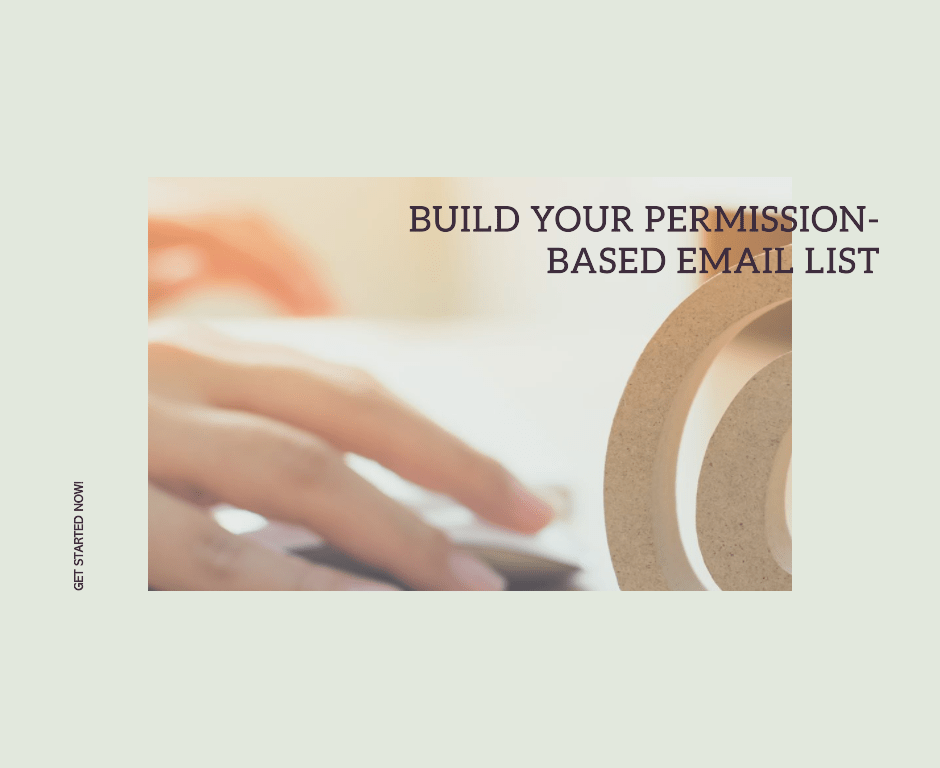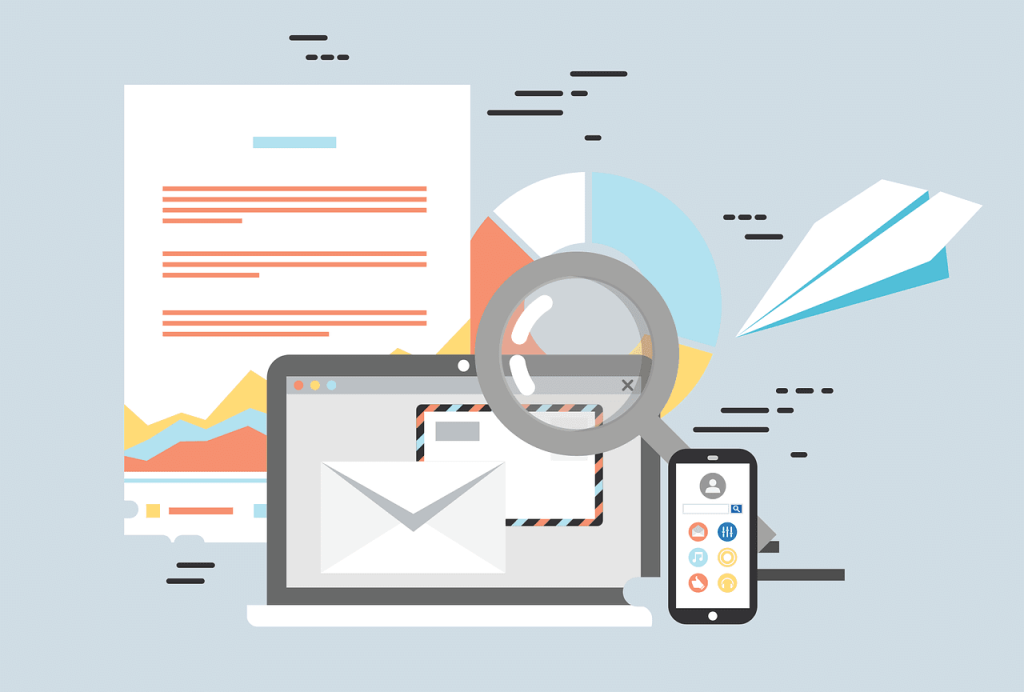Whether you're new to email marketing or looking to enhance your existing strategies, understanding and implementing best email marketing practices can significantly impact your success. In this article, we will delve into a comprehensive list of best practices for email marketing, covering everything from building a permission-based email list to continuously improving your campaigns.
[ez-toc]
1. Building a Permission-Based Email List

Building a permission-based email list is the first step towards effective email marketing. By obtaining permission from recipients, you ensure that your emails reach engaged and interested individuals. Consider the following steps to build a strong foundation for your email list:
- Obtain Permission: Use opt-in forms strategically placed on your website or landing pages to collect email addresses. Clearly communicate the value subscribers will receive by joining your list, such as exclusive content, offers, or updates.
- Emphasize Consent: Respect your subscribers' privacy and preferences by explicitly obtaining their consent before adding them to your email list. This fosters trust and reduces the likelihood of spam complaints or unsubscribes.
2. Choosing a Reliable Email Service Provider (ESP)
Selecting the right email service provider is crucial for the success of your email marketing campaigns. Consider the following factors when choosing an ESP:
- Reputable ESP: Opt for a reputable email service provider that aligns with your specific needs and goals. Look for providers with a solid track record, positive reviews, and a wide range of features.
- User-Friendly Interface: A user-friendly interface simplifies the process of creating, managing, and tracking your email campaigns. Look for drag-and-drop builders, intuitive navigation, and seamless integration options.
- Deliverability Rates: High deliverability rates ensure that your emails reach the intended recipients' inboxes. Research and choose an ESP known for maintaining strong deliverability rates and maintaining good sender reputation.
- Analytics and Reporting: A reliable ESP should provide robust analytics and reporting capabilities. These insights help you monitor campaign performance, measure key metrics, and make data-driven decisions.
3. Craft Engaging and Personalized Emails
Capturing the attention of your subscribers and building rapport is crucial for successful email marketing. Implement the following best practices when crafting your email content:
- Compelling Subject Lines: Write concise and compelling subject lines that entice recipients to open your emails. Experiment with personalization, urgency, curiosity, or offers to boost open rates.
- Conversational Tone and Personalization: Use a conversational and friendly tone throughout your emails.
- Personalize your emails with recipients' names to create a sense of connection and relevance.
- Segmentation for Targeted Content: Segment your email list based on subscribers' preferences, demographics, or past behaviors. This allows you to send targeted and relevant content that resonates with specific segments of your audience.
4. Create Mobile-Friendly Email Designs
With the widespread use of mobile devices, optimizing your email designs for mobile viewing is paramount. Implement the following practices to ensure a seamless mobile experience for your subscribers:
- Mobile Optimization: Optimize your email templates to ensure they display properly on various mobile devices. Test your emails across different screen sizes and email clients to ensure consistent rendering.
- Responsive Design: Utilize responsive design techniques that adapt your emails to different screen sizes. This ensures that your content remains easily readable and visually appealing on both desktop and mobile devices.
- Visual Appeal and Clarity: Keep your emails visually appealing with an appropriate balance of images and text. Use clear calls-to-action (CTAs) and legible fonts to guide recipients toward your desired actions.
5. Provide Valuable and Relevant Content
Delivering valuable and relevant content is the key to engaging your subscribers and building long-term relationships. Consider the following strategies:
- Informative and Useful Content: Share content that educates, entertains, or solves problems for your subscribers. Establish yourself as an expert in your industry by providing valuable insights and tips.
- Diversify Content Formats: Mix up your content by incorporating blog posts, videos, infographics, or exclusive offers. Cater to different preferences and provide content that suits various learning styles.
- Consistency and Frequency: Maintain a consistent sending schedule that aligns with your audience's preferences. Be mindful of not overwhelming subscribers with excessive emails or becoming inconsistent, which may lead to disengagement.
6. Maintain a Consistent Sending Schedule
Consistency is key when it comes to email marketing. By maintaining a regular sending schedule, you establish expectations with your subscribers and build anticipation for your content. Consider the following tips:
- Determine Optimal Frequency: Find the right balance between staying in touch with your subscribers and avoiding email fatigue. Analyze your audience's behavior and preferences to identify the optimal sending frequency.
- Avoid Overwhelming Subscribers: Be mindful of not bombarding your subscribers with an excessive number of emails. Respect their inbox space and focus on providing quality content over quantity.
- Testing Sending Times: Experiment with different sending times to identify when your audience is most responsive and optimize your email delivery accordingly.
7. Optimizing for Deliverability
To ensure that your emails reach your subscribers' inboxes and avoid being flagged as spam, focus on optimizing deliverability. Consider the following practices:
- List Hygiene: Regularly clean your email list by removing inactive or bounced email addresses to maintain a healthy sender reputation.
- Avoiding Spam Triggers: Steer clear of using spammy words, excessive capitalization, or misleading subject lines that may trigger spam filters.
- Authentication and Records: Authenticate your domain and set up proper SPF, DKIM, and DMARC records to establish credibility and improve deliverability.
8. Testing and Measuring Performance
Testing and measuring the performance of your email campaigns is crucial for continuous improvement. Consider the following strategies:
- A/B Testing: Experiment with different elements of your emails, such as subject lines or call-to-action buttons, to optimize engagement.
- Tracking Metrics: Monitor key metrics like open rates, click-through rates, and conversion rates to evaluate the effectiveness of your campaigns.
- Analyzing Results: Analyze the results of your email campaigns to identify areas for improvement and make data-driven decisions for future campaigns.
9. Monitoring and Respecting Legal Requirements
Compliance with email marketing regulations is essential to maintain trust and integrity. Consider the following practices:
- Familiarize Yourself: Stay informed about email marketing regulations such as CAN-SPAM or GDPR to ensure compliance.
- Unsubscribe Link: Include a clear and prominent unsubscribe link in every email and promptly honor opt-out requests.
- Consent and Data Usage: Obtain explicit consent from subscribers for collecting and using their personal data, respecting their privacy rights.

10. Nurturing and Engaging with Subscribers
Building meaningful relationships with your subscribers is a key objective of email marketing. Consider the following strategies:
- Automated Welcome Emails: Set up automated emails to thank new subscribers and introduce your brand, creating a positive first impression.
- Automation Workflows: Utilize automation workflows to send targeted follow-up emails based on subscriber actions, increasing engagement.
- Encouraging Interaction: Engage with subscribers by encouraging feedback, responding to inquiries, or running surveys to foster a sense of community and connection.
Conclusion:
Email marketing is a continuous process that requires experimentation, improvement, and adaptation. By implementing these best practices, you can establish a strong foundation for your email marketing efforts and build meaningful relationships with your subscribers. Remember to focus on providing value, personalizing your content, optimizing for mobile, and consistently measuring and improving your campaigns. With time and dedication, email marketing can become a powerful tool for driving engagement, nurturing customer relationships, and achieving your business goals.
Additional Reading:
- The Ultimate Guide to Email Marketing – This comprehensive guide by HubSpot covers various aspects of email marketing, including getting started, building an email list, sending marketing emails, email regulations, and email marketing analysis.
- 17 Email Marketing Best Practices That Actually Drive Results – This resource provides 17 best practices for email marketing, including tips on generating leads. It covers topics such as avoiding purchased contact lists, optimizing email preview text, cleaning mailing lists, personalizing email greetings, and more.
- 6 Email Marketing Best Practices for Growth – Salesforce.com – Salesforce.com offers insights into email marketing best practices, emphasizing the importance of a data-based strategy and the control you have over your subscriber list. The article highlights the significance of delivering high-quality, relevant content to engage users effectively.
- Email Marketing Best Practices for 2023 – Twilio SendGrid's resource provides tips and best practices for email marketing in 2023. It covers important elements such as reaching the inbox, crafting engaging email campaigns, and the latest email marketing tips and tricks.
- The Ultimate Aweber Review: Pros, Cons, and Features – Review of AWeber, which is an email marketing service designed to help small businesses and entrepreneurs create deeper relationships with their audiences while growing their businesses.


